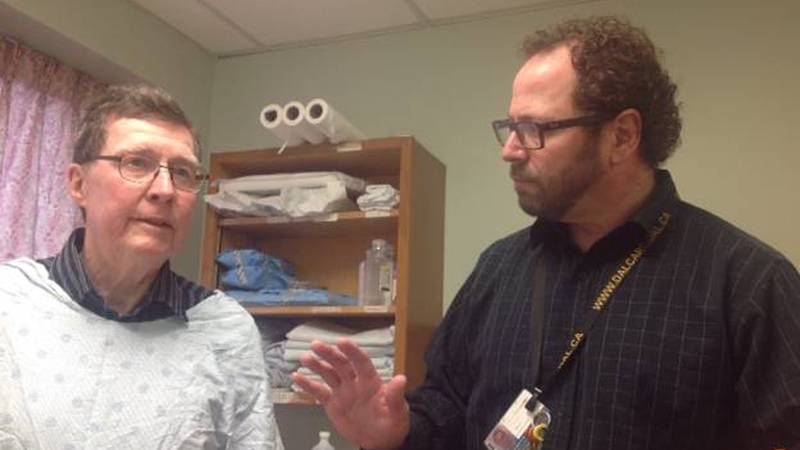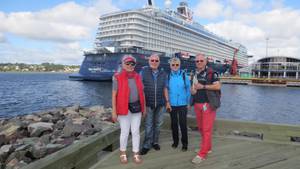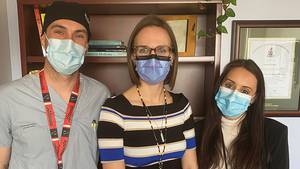A trip to the doctor to check out a bothersome spot on his shin took Michael Meacher on a journey through the Maritime healthcare system that spanned three years and dozens of trips to the QEII Health Sciences Centre.
Tests had revealed that the dark, weeping spot on Michael’s leg was melanoma and soon he was meeting Dr. Carman Giacomantonio, an oncologist at the QEII leading national research efforts in melanoma treatment.
Buoyed by the success of similar research programs abroad, Dr. Giacomantonio and his team started injecting Interleukin-2 proteins in melanoma cells in 2012. In contrast to the systemic approach chemotherapy takes, intralesional therapy allows oncologists to target the cancerous cells, leaving healthy tissues untouched and therefore decreasing side effects and patient recovery time.
The QEII is the only health centre in Atlantic Canada offering intralesional therapy; a treatment option Dr. Giacomantonio says has “changed the world” since it was introduced five years ago.
“What we’re seeing in our patients is they’re not developing metastases, a secondary malignant growth; they’re getting systemic (full body) response to a local treatment without the systemic toxicity,” Dr. Giacomantonio says.
Michael’s melanoma was “deep and active” and his cancer was a good candidate for intralesional therapy and Interleukin-2 injections. The outpatient treatment is given through a series of small injections in the tumour. Michael endured 23 treatments, preventing the melanoma from spreading to any vital organs, and credits the state-of-the-art treatment at the QEII for this success.
“There was never a doubt that I wasn’t being taken care of every step of the way,” Michael says, scrolling the digital journal he recorded important dates, times and treatment outcomes in. The retired engineer says he feels lucky to have been offered cutting-edge treatments and commended the team of doctors at the QEII who worked collaboratively to find the best treatment plan for the P.E.I. senior’s complicated health concerns.
Melanoma, a skin cancer that arises from the cells that give us a suntan, is among the fastest-growing cancers in Canada and Nova Scotia has among the highest rates in the country.
“In Nova Scotia, we have a genetic predisposition and a lifestyle predisposition to melanoma,” Dr. Giacomantonio says. “We’re indoors for the long, dreary winter and when summer comes we’re overexposed and underprotected.”
Like most health concerns, if caught early, melanoma is treatable. The longer the disease is left unchecked, the thicker and deeper the melanoma can penetrate, making it more likely for the cancer to spread throughout the body, with devastating effects.
Chemotherapy is no longer considered a viable treatment option for melanoma, while surgical removal of the cancerous area is appropriate 50 per cent of the time.
The QEII’s melanoma research and intralesional therapy research program has led way in Atlantic Canada and the findings will benefit patients coping with all forms of cancer. The quick, non-invasive therapy is given every two weeks until complete resolution or progression.
“It’s an exciting time because it’s a shift in the way we think of cancer care delivery or treatment,” Dr. Giacomantonio says. “The therapy will be applied to so many cancers because the principal applies to all cancers.”








